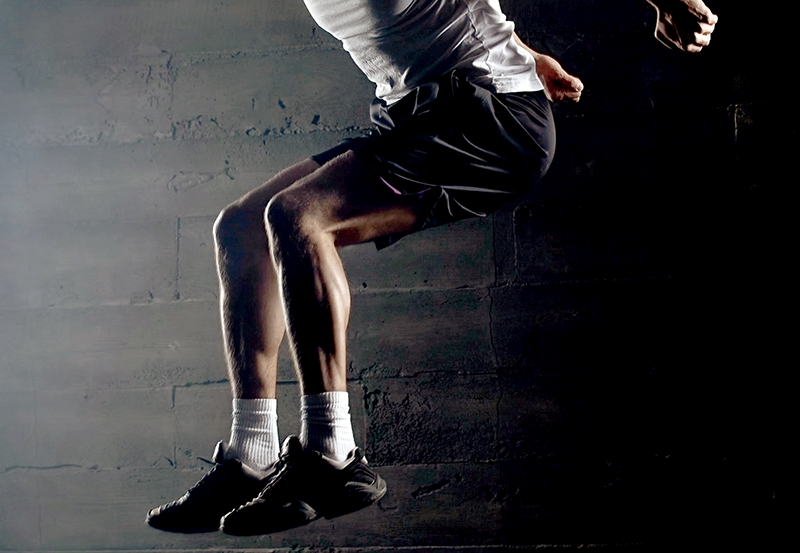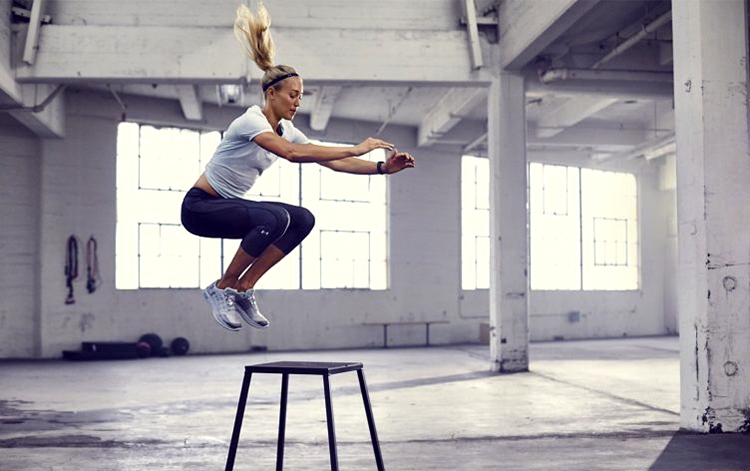You are viewing 1 of your 1 free articles. For unlimited access take a risk-free trial
Plyometric power: good for cyclists and rowers?

Plyometric training exercises have been shown to increase muscle power and performance in endurance runners. These exercises involve loading a muscle then contracting it rapidly (eg jumping off a platform then springing upwards immediately after landing) to increase the speed, force and ‘explosiveness’ of muscular contractions. More recently, plyometric training has also been shown to improve running economy, which is a measure of muscle efficiency. All other things being equal, higher levels of running economy means that less energy is required at sub-maximal running speeds, which in turn can improve endurance. But can plyometrics improve performance in other endurance sports such as cycling and rowing? While plyometric training is used by some rowing coaches, there’s been little research to date on how effective it really is. But a recent study on plyometric training combined with onwater training does provide us some answers.
The research
In the 4-week study, eighteen male high school rowers were split into two groups [Sports Med Open. 2017 Dec;3(1):7. doi: 10.1186]. Both groups continued to perform their on-water rowing training as normal. However, before each of the three training sessions per week, one group performed a range of plyometrics exercises for 30 minutes while the second group performed 30 minutes of moderate-intensity stationary cycling. Importantly, the training loads of the two groups were evenly matched. Before and after the intervention, the rowers were assessed for performance. Tests included a 500m rowing time trial and peak rowing power. Rowing economy (how efficiently the rowers’ muscles were able to use oxygen to produce energy) was also assessed at four work rates - 90, 120, 150, and 180 watts. The researchers then compared the test results from the two groups.The findings
The first finding was that rowing economy was improved in both groups with no difference between groups. In other measures however, the plyometrics group excelled. In the 500m time trial, the plyometrics group dropped their times by over five seconds (from 99.8 seconds to 94.6 seconds) – a very significant improvement. The cycling-training group experienced no such improvement. Also, peak rowing power was significantly higher in the plyometrics group; compared to an average of 569 watts in the cycling group, peak power in the plyometrics group averaged 629 watts.Analysing the results
The first thing to say is that adding in three sessions of plyometrics training per week undoubtedly helps rowing performance over 500 metres. However, because the plyometrics group didn’t show a gain in rowing economy, the 500m performance gains were more likely due to the increased power output. This is perhaps surprising because previous research on runners has shown clear gains in economy following the addition of plyometrics into a running programmeMed Sci Sports Exerc. 2016 Jan;48(1):49-56; Eur J Appl Physiol Occup Physiol. 1991;62(1):40-43. However, these interventions took place over longer periods of time (six weeks) rather than the three weeks used in this study. It’s possible that longer interventions might produce rowing economy gains, which could also benefit long-distance rowing performance, but more research is needed. Nevertheless, these results suggest that plyometrics is a worthwhile addition to a rowing programme because even long distance races require flat out sprints for the line! And while this study looked at rowers, the high degree of overlap between the lower body muscles used in rowers and cyclists means that cyclists would be likely to derive similar benefits too.Applying the findings
If you’d like to add some plyometrics to your cycling or rowing programme, here are some general tips:- *It’s best to perform plyos on a running track. Suitable alternatives include sprung gym floors or dry, flat grass.
- *Always focus on the ‘quickness’ of your reactions – don’t lever yourself out of jumps. Land light and move quickly.
- *Don’t overdo it - Build up slowly, and underestimate what you think you can achieve initially. Expect to experience some muscle soreness but this should be a rare occurrence once you include plyos regularly into your workouts.
- *Watch for fatigue - If you notice that your reactions and ground contacts are slowing then take longer recoveries or stop the session.
- *Perform plyos when you are fresh. A great opportunity to fit plyos into your run training is during your warm-up - or in separate strength and conditioning workouts.
Newsletter Sign Up
Testimonials
Dr. Alexandra Fandetti-Robin, Back & Body Chiropractic
Elspeth Cowell MSCh DpodM SRCh HCPC reg
William Hunter, Nuffield Health
Newsletter Sign Up
Coaches Testimonials
Dr. Alexandra Fandetti-Robin, Back & Body Chiropractic
Elspeth Cowell MSCh DpodM SRCh HCPC reg
William Hunter, Nuffield Health
Keep up with latest sports science research and apply it to maximize performance
Today you have the chance to join a group of athletes, and sports coaches/trainers who all have something special in common...
They use the latest research to improve performance for themselves and their clients - both athletes and sports teams - with help from global specialists in the fields of sports science, sports medicine and sports psychology.
They do this by reading Sports Performance Bulletin, an easy-to-digest but serious-minded journal dedicated to high performance sports. SPB offers a wealth of information and insight into the latest research, in an easily-accessible and understood format, along with a wealth of practical recommendations.
*includes 3 coaching manuals
Get Inspired
All the latest techniques and approaches
Sports Performance Bulletin helps dedicated endurance athletes improve their performance. Sense-checking the latest sports science research, and sourcing evidence and case studies to support findings, Sports Performance Bulletin turns proven insights into easily digestible practical advice. Supporting athletes, coaches and professionals who wish to ensure their guidance and programmes are kept right up to date and based on credible science.











